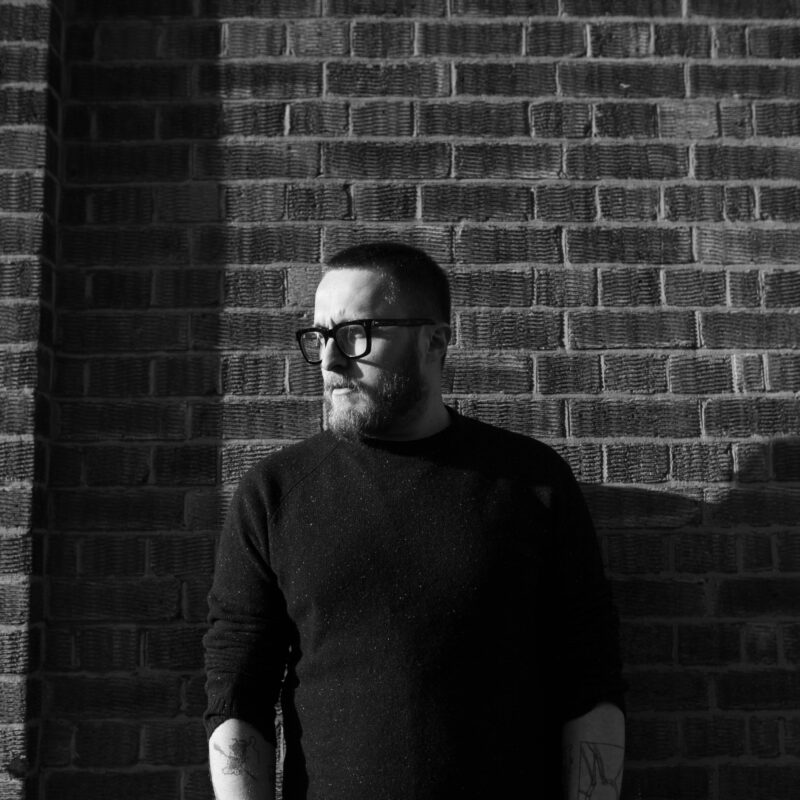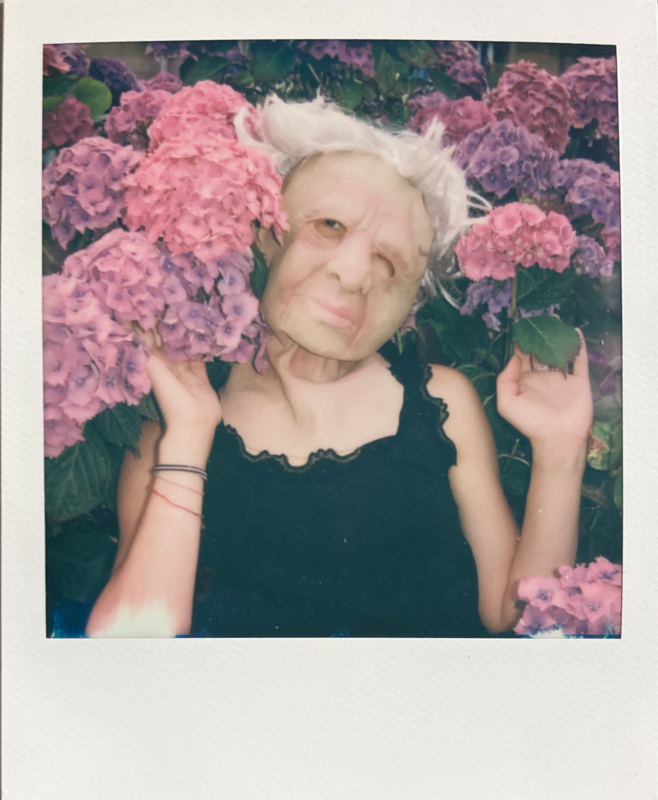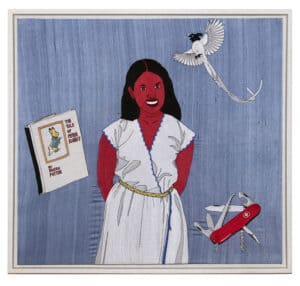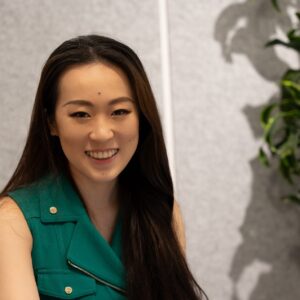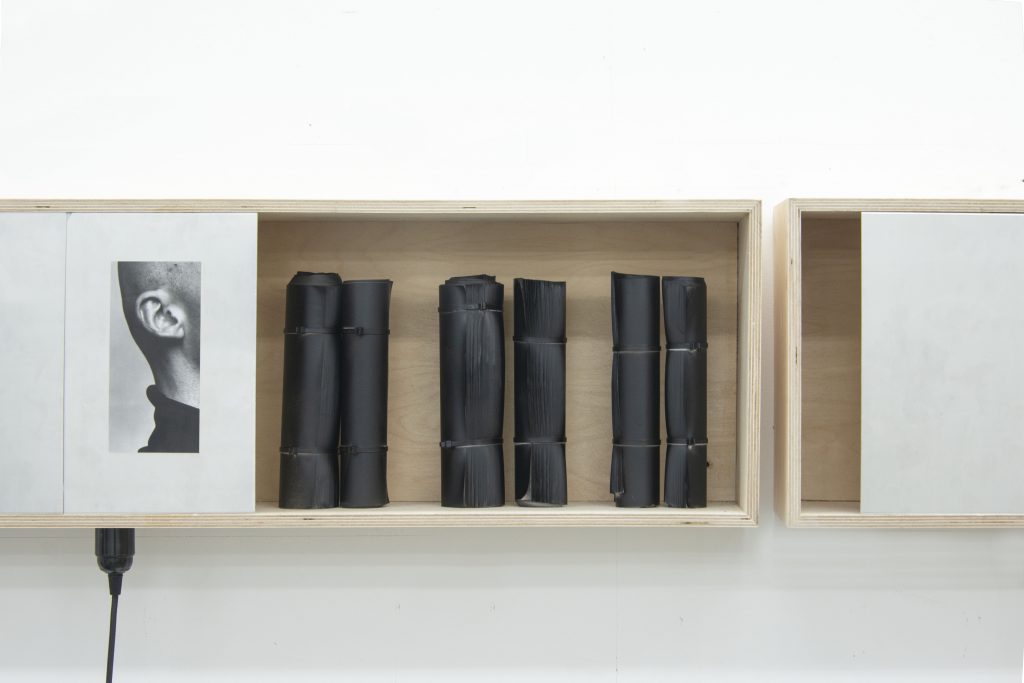
Gillies Adamson Semple, Cycle of Fifths (Detail), Plywood, aluminium, light fitting, archival print, paper, spray paint.
Scottish born, London-based artist Gillies Adamson Semple recently sat down with art historian, writer and curator Hector Campbell to discuss his experience of artist residencies, his approach to curation, his return to art education and his current exhibition project springseason, which runs at Fieldworks in London Fields until September 10th.
Hector Campbell: Having graduated from Central Saint Martins with a BA in Fine Art in 2018, after also completing a year at the Royal Institute of Art in Stockholm, you’re scheduled to start on the MFA Fine Art course at the Slade School of Fine Art this September. How does it feel to be returning to arts education after two years navigating the art world? And what are you most looking forward to about the course at the Slade?
Gillies Adamson Semple: Since graduating Central Saint Martin’s I have been an Associate Studio Programme member, based in ACME Studios in Stockwell, out of which 8 of us work; so despite having graduated 2 years ago, there has still been a great sense of activity and support via this initiative. Throughout this time I have maintained a very rigorous, studio-driven work structure. I am really looking forward to moving back into full-time education, where almost all activity is engaged around my work and that of others; whether that is led by things theoretical, social or practical. Obviously now is an uncertain period for something so structured, however, I am hopeful that the mass amount of change that our current situation has brought will affect how new students approach education in their positions of questioning and listening.
H.C: Last year you partook in a residency programme at the LTYE Youkobo Art Space in Tokyo, which culminated in an exhibition exploring the style of display apparatus utilised by both the city’s art institutions and advertising industry. How did you find the artist in residence experience? And has it had a lasting effect on your artistic practice?
G.A.S: Youkobo Art Space is a brilliant institution, geographically distanced from the high intensity of Tokyo, yet immensely connected to a great scene. They have had hundreds of great practitioners pass through their space; be it artists, writers or performers. Having the privilege of living in the studio and being a stranger in a culture so different from the one to which I am comfortable, enabled a totally different approach to material sensitivity. I found that an absence of discernible scripture meant that symbols and images became more important than language, so the work was heavily influenced by pictorial displays of advertising and commerce, as well as art. And as a result, I came back with finding myself more personally attached to the images that I use; with an understanding that their resonance does not need to be publicly displayed. It was also the first point at which I was treated, by a different community, as something other than a student/graduate, but as a practitioner in my own right.
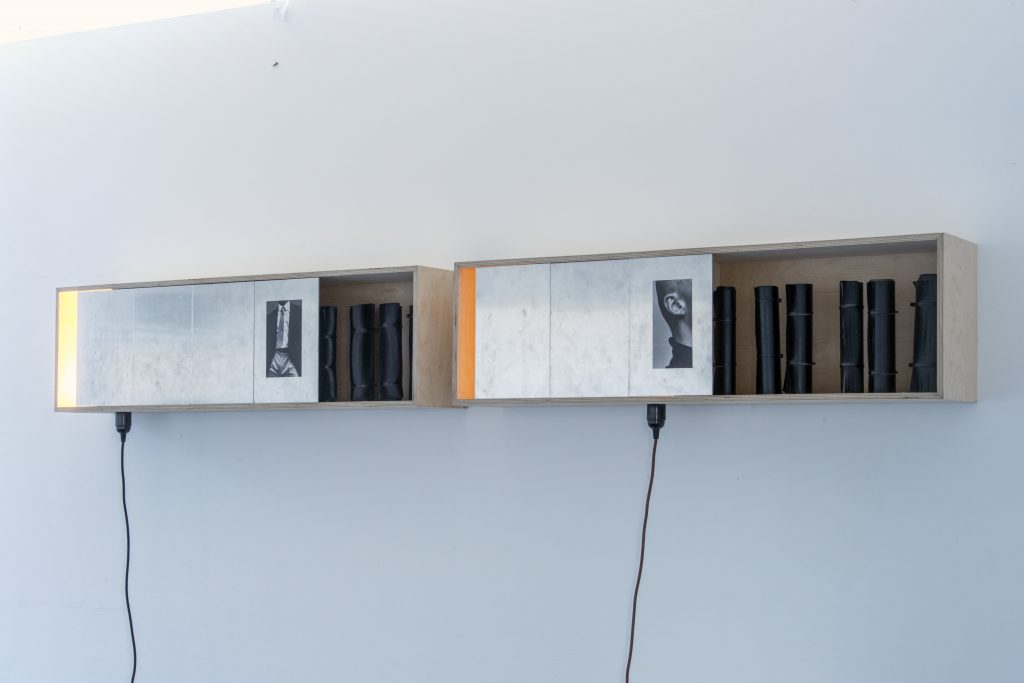
Gillies Adamson Semple, Cycle of Fifths, Plywood, aluminium, light fitting, archival print, paper, spray paint.
H.C: Your latest solo exhibition, last years Operation Flower at 16 Nicholson Street in Glasgow, was in part informed by your time in Tokyo, as it took its name from a crime prevention initiative and cultural event that occurred between 2002-08, wherein flowers were placed outsides homes in an attempt to deter burglars by appealing o their inner sensitivity. Could you explain further the conceptual ideas that underpinned this exhibition? And how the physical artworks responded to the exhibition’s namesake?
G.A.S: Initially the show was going to take the form of a re-contextualised version of the work and research undertaken in Tokyo. However, through conversations with Nell Cardozo and Isabella Shields who run 16 Nicholson Street, it became more important to me to respond to the brief period I had spent in London since Tokyo, a period of decompression and reflection. The show became an inquisition into nostalgia’s relation to site, something I have always dealt within my work. How does a physical place have a connection to something so emotionally driven as nostalgia – and what are the dangers of this? Going from a temporary home of Tokyo to a permanent home of London, and then returning to a past in Scotland, allowed a personal comparative discourse to form relating to my response to place. 16 Nicholson Street is also based in an old restaurant, and I love working with sites that do not bear resemblance to what are becoming all too conventional situations within which to see work, and that instead have a past life.
The name Operation Flower, as you rightly say, was a successful attempt by the Suginami Ward council to deter criminal activity by activating a sensitivity through deeply romantic means. The exhibition was a way of processing the treatment of nostalgia with sensitivity; not through punishment, but instead with active critical redirection.
H.C: Later this year you will curate the Ai Mi Tayai exhibition programme at Lethaby Gallery, a project that aims to showcase artists based in both the UK and Tokyo. What appeals to you about this bi-national approach to curating?
G.A.S: I am on the committee that is planning Ai Mi Tagai – which roughly translates as ‘Mutual Empathy’. This is the second iteration of an exhibition run in collaboration with Tokyo University of the Arts, Central Saint Martins and Youkobo Art Space. Twenty-two artists who have undertaken the residency, or are in some ways connected to it, will exhibit new work for the exhibition. The immensely varied practices of these artists have enabled us to envisage various apparatus to act as a structure to bind the individuality of each work. The process has been as much about the community of people that have all experienced the Youkobo exchange as the work they will show – so by structurally composing the works, we hope to find a way to create equilibrium for each artist. Obviously, due to travel restrictions, we have been hit hard in planning – but the exhibition will happen without compromise while embracing all the change that has affected us.
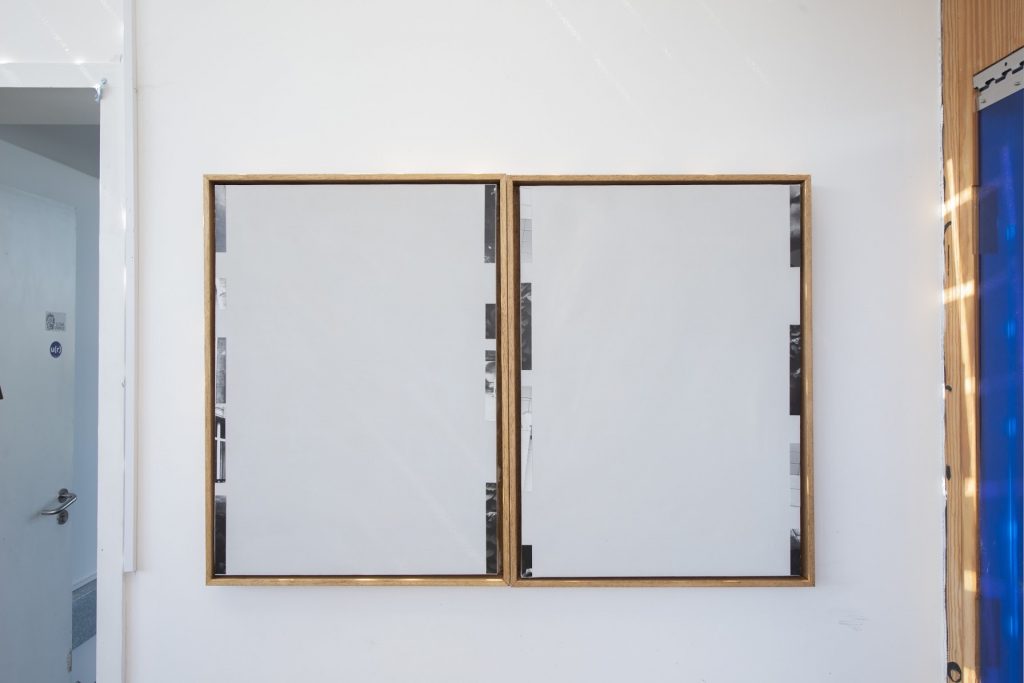
Gillies Adamson Semple, Cycle of Fifths, Stretched canvas and archival print, obeche frames.
H.C: You acted as co-director of fivehundredthousand Gallery from 2016-2020, alongside fellow artists Eliot Z. Felde & Harry Smithson, during which time you staged many solo and group exhibitions, hosted an evening of video artworks at Deptford Cinema, lectured at the Universität der Künste, Berlin and were nominated for the Workweek Prize for artist-led and independent curatorial projects for ‘The World Tour Inauguration’, presented for ArtLicks Weekend. How did your involvement in that project inform your own artistic practice?
G.A.S: I was very lucky to find a very strong collaborative language with Harry and Eliot, and it is a working relationship I am still hugely fortunate to have, despite our conscious disbanding of fivehundredthousand. Harry is a product designer and artist, and Eliot is a Fashion designer and artist, so we were able to pull from a varied approach to material through the development of exhibitions.
My inquiry into, and experience of, curation is no different from my treatment of my own work – where a similar breadth of problems and solutions perpetually present themselves, and everything comes with its own sense of learning. Just with curation, you get the pleasure of overcoming these issues with others who bring their own artillery. After showing over sixty artists across ten exhibitions and various off-site projects, I have been able to gain experience from working with an ensemble of successes and failures and to streamline my interest in the exhibition format, having truly learnt by doing. I feel it’s hard to emphasise enough how important collaborative working is for me, and this project very much carved out this development as seeing art as a tool for socialisation and empathy.
H.C: Your current curatorial endeavour, springseason, sees six artists – yourself included – exhibiting across the FieldWorks site in London Fields. As a project that was planned prior to the recent global pandemic and subsequent lockdown, how has springseason evolved and adapted to accommodate with the changing circumstances?
G.A.S: springseason started with a conversation between myself and Dan Ross, who founded and operates FieldWorks as a creative community of small businesses and initiatives. We came to the conclusion that he would grant me access to the rooftop site to curate a season of eight exhibitions in the spring of 2020 – hence our title. The interest for me was how can I build an atlas of contemporary reference, utilised by artists but very rarely seen. I wanted to choose eight artists or artist groups who I knew would invest as much time and ambition into the project as myself, especially when working with a really unconventional space over a long duration. The season also gave me the ability to work with international artists whom I haven’t had the pleasure of collaborating for a while, if ever.
The exhibition, which opened earlier this month, now sees six UK-based artists showing across the whole of FieldWorks, since COVID-19 has rendered more properties temporarily available. This enabled both a great amount of adaptation, flux and change for us as artists, as well as the ability to maintain safety and protection as people come to see the show. The installation lasted around a week, during which time each artist positioned, repositioned, added and redacted works in what really felt like a living and moving body of work.
Since the exhibition has opened, I will be working further with one space in particular, with much more activity to come in the form of a prolonged programme of artists – hopefully soon with the ability to show those who are working overseas.
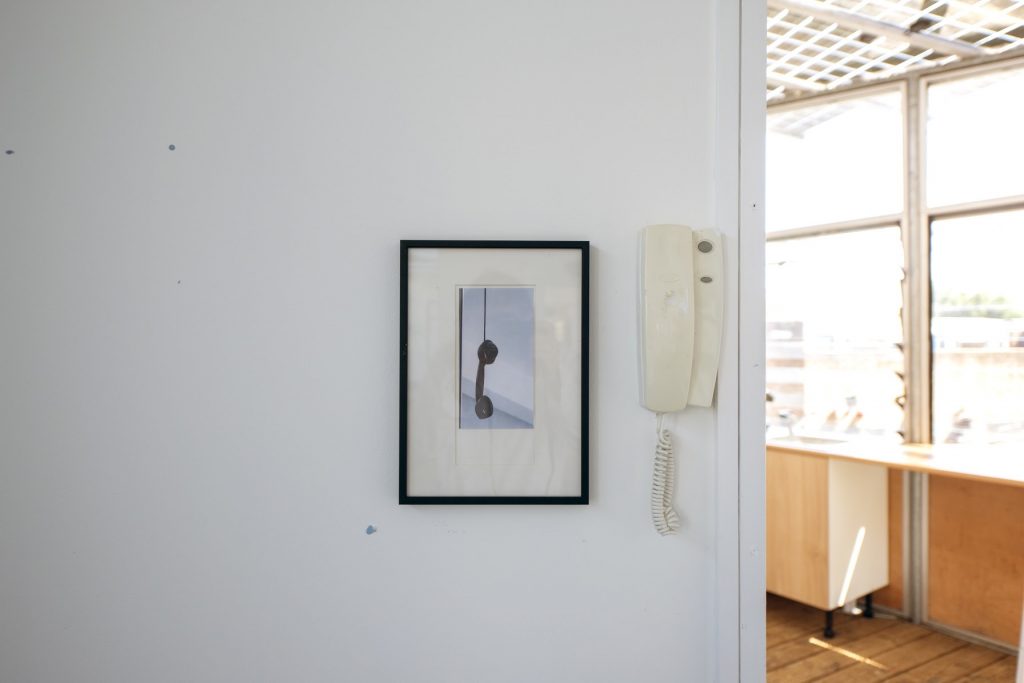
Gillies Adamson Semple, Untitled (After Douglas Gordon), Artists frame, archival print, intercom.
H.C: Finally, for springseason you are exhibiting three artworks spanning multiple mediums, two entitled ‘Cycle of Fifths’ as well as ‘Untitled (After Douglas Gordon)’. Could you tell us more about these new artworks?
G.A.S: The lockdown period was, as for many, a period of silent and private working. For the time it was active, and the months that have since suffixed lockdown, my production of work has been greater in its mass. Bodies of work are beginning to form as opposed to the approach I often took before where things were configured solely for exhibition or visible display. While still in the middle of this, it is hard to recognise the shift in some ways, but a more steady ethos of making has produced work that feels strong in its difference from what I was doing before.
The new works in the exhibition are the outcomes of this response. Cycle of Fifths is a series adopting its title from the musical chord progression Circle of Fifths, where the dominant 5th of any note will present a cycle that ends up returning the beginning after it has completed the round. Taking material from a book brought back from Japan, the works attempt to build a periphery of an image that only indicates the whole. The margins in the painting and the displays on the sculptures denote the removal of provenance, while simultaneously positioning themselves as somewhere between artworks and design ornaments. This body of work looks at how apparatus for image display contains a syntax as much as the images themselves, whether found in sculptural, commercial or design forms.
The second work responded to the intercom used to allow people into the well-protected Fieldworks site. A scanned image pulled from a huge archive I have accumulated depicts a phone hanging, positioned next to the device used as a gateway between the space outside and that inside. The work was installed after the show was complete and was a necessary move to further visualise all of our responses to architecture. All the detritus from the FieldWorks site, whether that be mould, unpainted walls, leaves and dust, cobwebs and bird shit were all left untouched, both in recognition of the former life of this building, as well as positioning ourselves as just passing through.
springseason, featuring Gillies Adamson Semple, Kobby Adi, Kara Chin, Nathaniel Faulkner, Alia Hamaoui & Nina Porter, is on display at Fieldworks in London Fields until September 10th.
